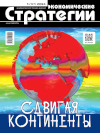Artificial Intelligence: Ability of Judgment? Natural Force or Driver Behind AI
DOI: 10.33917/es-5.197.2024.70-79
Currently, the topic of super-AI (Artificial General Intelligence or AGI) has captured the world’s press. Some are fascinated by the incredible possibilities, including the creation of a future global government, while others fear the arrival of an alien mind capable of displacing man. The authors show that, as usual, both positions miss the mark. There is no doubt that AI is a fundamentally new tool. Therefore, it can be both extremely useful and immensely dangerous, depending on its application. One thing is clear: innocence has been lost and it will not be possible to rewind it. The world is entering a new phase of development with the enormous potential. However, the transition period threatens with even greater dangers than the first half of the 20th century, when the advent of the internal combustion engine to replace the steam one has led to dramatic shifts in the economy and a change in political dominance against the backdrop of two world wars.
As industrial productivity growth decreases, financialization grows, oppressing the “real” sector, demographics is falling and the world is sliding into wars for dominance against the backdrop of the fading industrial society of the 20th century.
References:
1. Badalyan L.G., Krivorotov V.F. Industrial’nye Srednie veka, ili Est’ li zhizn’ posle industrial’nogo kapitalizma? Chast’ I [Industrial Middle Ages, or Is There Life After Industrial Capitalism? Part I]. Rossiyskiy ekonomicheskiy zhurnal, 2023, no 3, pp. 17–37.
2. Badalyan L.G., Krivorotov V.F. Industrial’nye Srednie veka, ili Est’ li zhizn’ posle industrial’nogo kapitalizma? Chast’ II [Industrial Middle Ages, or Is There Life After Industrial Capitalism? Part II]. Rossiyskiy ekonomicheskiy zhurnal, 2023, no 4, pp. 4–23.
3. Corsini R.J. The Dictionary of Psychology. London, Routledge, 2016. P. 494.
4. Davidson H. Alfarabi, Avicenna, and Averroes, on Intellect. Oxford University Press, 1992, p. 6.
5. Colman A.M. A Dictionary of Psychology. 3rd ed. Oxford [etc.]. Oxford University Press, 2008.
6. Sangha N. Instinct, Intellect, Intelligence, Intuition. Occult Mysteries, 2015, available at: https://occult-mysteries.org/intelligence.html
7. Kant I. Kritika sposobnosti suzhdeniya: Sobr. soch. [Critique of Judgment: Collected Works]. Vol. 5. Moscow, Mysl’, 1966.
8. Zhukovskiy V.A. Skazka o Ivane-tsareviche i Serom Volke [The Tale of Ivan Tsarevich and the Gray Wolf]. Moscow, Prospekt, 2013, 31 p.
9. De Gruyter. Kant and Artificial Intelligence. Edited by Hyeongjoo Kim and Dieter, 2022.
10. Asimov I.I, Robot. Garden City. N.Y., Doubleday, 1950.
11. Zhuravlev Yu.I. Ob algebraicheskom podkhode k resheniyu zadach raspoznavaniya ili klassifikatsii [On an Algebraic Approach to Solving Recognition or Classification Problems]. Problemy kibernetiki, vyp. 33. Moscow, Nauka, 1977.
12. Zhuravlev Yu.I. Korrektnye algebry nad mnozhestvami nekorrektnykh (evristicheskikh) algoritmov [Correct Algebras over sets of Incorrect (Heuristic) Algorithms]. Kibernetika, 1977, no 4; 1978, no 8.
13. Zhuravlev Yu.I. Raspoznavanie: Matematicheskie metody. Programmnaya sistema. Prakticheskie primeneniya [Recognition: Mathematical Methods. Software System. Practical Applications]. Moscow, Fazis, 2006, 147 p.
14. Vapnik V.N., Chervonenkis A.Ya. Teoriya raspoznavaniya obrazov [Pattern Recognition Theory]. Moscow, Nauka, 1974.
15. Vapnik V.N. Vosstanovlenie zavisimostey po empiricheskim dannym [Restoring Dependencies from Empirical Data]. Moscow, Nauka, 1979.
16. Badalyan L.G. Otsifrovka kachestvennykh priznakov: Sotsiologiya. Vol. 4. Matematicheskie metody i priemy. Slovar’ i spravochnik [Digitization of Qualitative Features: Sociology. Vol. 4. Mathematical Methods and Techniques. Dictionary and reference book]. Moscow, Nauka, 1991.
17. Badalyan L.G. Lipovetskiy S. Kanonicheskiy analiz, kanonicheskaya otsifrovka: Sotsiologiya. T. 4. Matematicheskie metody i priemy. Slovar’ i spravochnik [Canonical Analysis, Canonical Digitization: Sociology. Vol. 4. Mathematical Methods and Techniques. Dictionary and reference book]. Moscow, Nauka, 1991.
18. Badalyan L.G. Otsifrovka kachestvennykh priznakov pri analize svyazey: Interpretatsiya i analiz dannykh v sotsiologicheskikh issledovaniyakh: Kollektivnaya monografiya [Digitization of Qualitative Features in the Analysis of Relationships: Interpretation and Analysis of Data in Sociological Research: Collective monograph]. Gl. 3. Moscow, Nauka, 1987.
19. Badalyan L.G. Pro istoricheskuyu psikhologiyu. Metod izucheniya sotsial’nogo povedeniya: Sb. statey [About Historical Psychology. Method of Studying Social Behavior: Collection of Articles]. Institut psikhologii AN SSSR. Moscow, 1990.
20. Badalyan L.G. Modelirovanie pri rekonstruktsii elementov paleopsikhologii (postanovka problemy i metodicheskie rekomendatsii): Sb. “Metody rekonstruktsii v arkheologii” [Modeling in the Reconstruction of Elements of Paleopsychology (Problem Statement and Methodological Recommendations): Collection “Reconstruction Methods in Archaeology”]. Novosibirsk, Nauka, 1991, pp. 95–115.
21. Badalyan L.G. Kolichestvennye metody v issledovanii politicheskoy bor’by. Ispol’zovanie stenogramm politicheskikh s”ezdov [Quantitative Methods in the Study of Political Struggle. Using Transcripts of Political Congresses]. Sotsiologicheskie issledovaniya. Zhurnal AN SSSR, 1990, no 11.
22. Badalyan L.G. 1918 god — istoki monopolii i vlasti? [1918 — the Origins of Monopoly and Power?]. Znanie — sila, 1989, no 10, pp. 17–25; no 11, pp. 23–29.
23. Badalian L. Object-Oriented Frequency-Based Method Of Mixed Data Analysis. The American University. А Report on a Symposium, 1995.
24. Badalian L. The “Mystery” of the Russian Soul. World&I, 1992, pp. 591–609.
25. Jiaming Song, Chenlin Meng, Stefano Ermon. Denoising Diffusion Implicit Models. arXiv preprint arXiv:2010.02502v4 [cs.LG], 5 Oct 2022.



